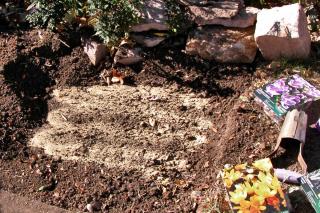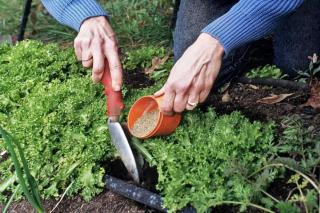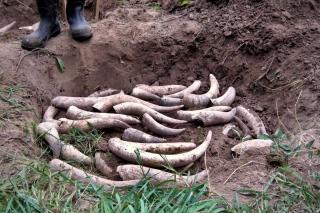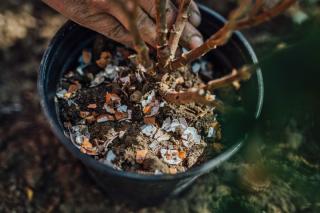

N, P, K… does this fertilizer alphabet mean anything to you? These three elements – present in blood and bone meal – are crucial for proper plant growth.
• Nitrogen (N) → leaf growth
• Phosphorus (P) → plant immunity
• Potassium (K) → blooms & fruits
To reap a great harvest and increase productivity in the vegetable patch or to smother the garden with flowers, these natural fertilizers are the way to go!
No need to fall prey to the dark side of the force – you can avoid use of nefarious chemical fertilizers completely!
Many natural fertilizers are very effective, often even more so than chemical ones. This is particularly true of fertilizers derived from animals.

Lawn trimmings, vegetable scraps, carrot and radish leaves, leaf mulch, vegetable broth, weedy tea… it’s already a common practice to use plant-based fertilizer as nourishing mulch or compost ingredients. Everyone quickly gets familiar with these plant-derived products.
Enter the Animal Kingdom.
Though always covered with plant material, the ground occasionally gets a dose of animal matter as well. In the wild, life and death provide these randomly. In your garden, dried blood, crushed horns, bird guano, bone powder, eggshells can be added at will.
Pair plant matter with animal residues to boost blooming and get tasty produce.

Also called blood meal, it’s commonly used for flower plants and has the advantage of bringing on quick results.

This makes it an excellent choice to provide nutrients over the entire vegetation (growing) season, from March to October.
As a consequence, remember to use it in autumn, during the planting phase, but it’s also worth adding to potting mixes in spring, when you repot most container-grown plants.
For the vegetable patch and for flower perennials, restrain yourself to 2½ oz (75g) for a square yard or meter, whereas 1½ oz. per square yard (50g/m²) is enough for heath plants. A tree or shrub will require about 14 oz (400g) upon planting.
You’ll be tempted to increase these doses – resist!
Having too much nitrogen in the soil is actually detrimental, since plants will only produce leaves and completely forget about flowers and fruits.
Typically collected from places where seabirds gather, guano has incredible amounts of both nitrogen and phosphorus.It’s perfect for both the veggie patch and the flower garden. Just like dried blood meal, it’s a “power boost” that yields immediate results. The recommended dosage is 1.5 oz. for a square yard (50g/m²) 2.

Add your eggshells to your compost or crush them finely to sprinkle them at the base of your plants. The rule of thumb is to give each plant a small handful. Scratch it into the soil with a cultivator to avoid forming a crust.
Phosphate-rich with a lot of calcium on the side, bone meal is an effective fertilizer. It supports root growth as well as blooming and fruit formation. Spread it as you would the egg shells, or simply toss a handful in the hole upon planting. Use about 2½ oz (75g)2 for perennial flower beds, and a bit more at 4.5 oz (100 g/m²)2 for the vegetable patch and for bulb flowers. Weigh out about 2½ ounces (75g) per shrub and twice that amount, 5 ounces or 150g, for each tree. Read also: